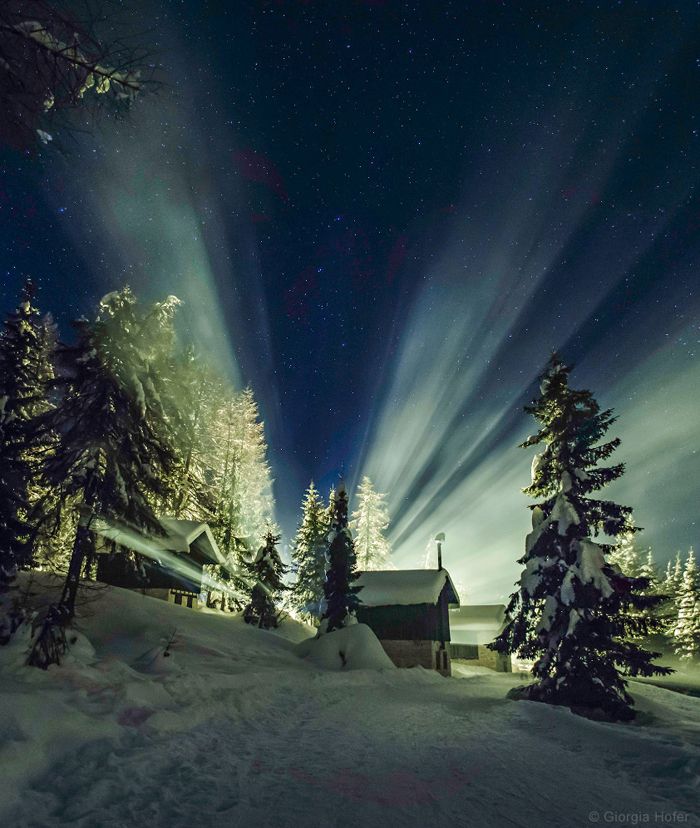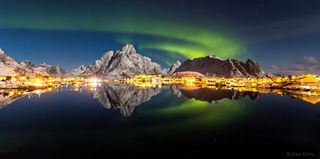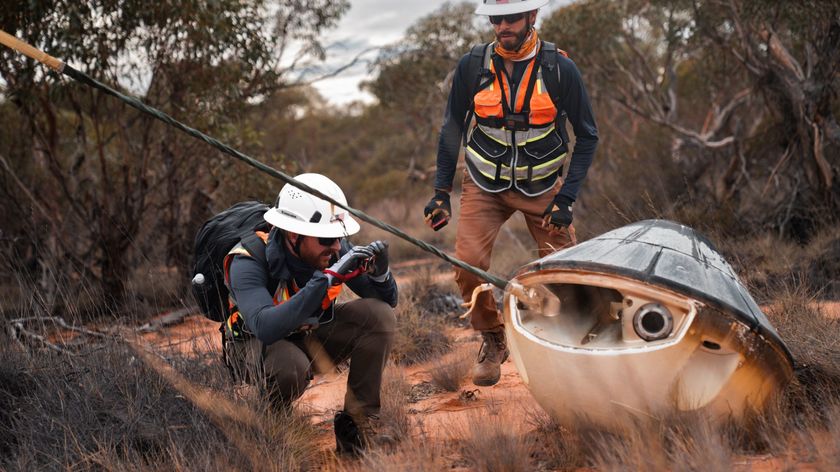Swirling Aurora, Zodiacal Light Win Top Prizes in Night Sky Photo Contest

The night sky never looked so inviting. From light rays framing the Big Dipper above the Alps to the eerily stunning aurora hovering atop Norway to the silhouettes of skywatchers below Mother Nature's starlit dome, the winners of a dark skies photo contest delight with their upward gazes.
The winners of the fifth annual Earth and Sky Photo Contest were announced this week, with photographer Giorgia Hofer of Italy taking first place for her "Light in the Sky" image, which she snapped on New Year's Day, Jan. 1, 2014, from Cibiana Pass in the Dolomites in northern Italy. Lights from a tower illuminate mist from fireworks framing the Big Dipper with light rays.
"This captures the great ambiguity we feel about the night and night lighting," contest judge and National Geographic photographer James Richardson said in a statement. "It is at once beautiful and beautifully composed. But it is also night lighting obscuring the beauties of the night. A beautiful image that confronts us with our own, conflicted desires." [See Photos of the Night-Sky Contest Winners]
The photo contest, organized by The World at Night (TWAN), was founded as a regional endeavor in 2008, becoming an international event in 2009 during the International Year of Astronomy. In order to be considered in the contest, photos must have been taken during the 2013-2014 year and must show both the Earth and the night sky. The resulting images are meant to draw attention to preserving the night sky as part of humanity's natural heritage while also supporting efforts to control light pollution, TWAN said. This year's theme was "Dark Skies Importance," and included two photo categories: "Beauty of the Night Sky" and "Against the Lights." The first-place winner, Hofer, snagged both the overall photo prize and No. 1 in the "Against the Lights" category.
Other winning photos among the entries from 55 countries included Luc Perrot's "Over the Top" image from Reunion Island of France, which took first place in the "Beauty of the Night Sky" category. Perrot captured the Piton de la Fournaise volcano peaking above a sea of clouds beneath a starry sky and the bulge of the Milky Way galaxy. "The image shows no sign of human presence, and is a reminder that the foreground landscape and the dark dust lanes in the Milky Way are made of the same elements, seen here as delicate clouds and solid mountain peaks," contest judge David Malin said in the statement.
Second place in the "Beauty" category went to Ben Coffman of Portland, Oregon, for his nightscape image showing a waterfall along the Pacific coast bathed in zodiacal light. Called false dusk or dawn, as the light is visible just after dusk or before dawn, such night-sky light results from sunlight reflecting off of dust in the solar system plane.
"What a beautiful sense of the edge of the night, the transition between our sense of day and night, how one slips into the other," Richardson noted. "The waterfall, the stream leading away, leading our eye to the glowing horizon, the deep blue receding into blackness, all set an incredibly tranquil tone."
Sign up for the Live Science daily newsletter now
Get the world’s most fascinating discoveries delivered straight to your inbox.

A photograph of an aurora took home second place in the "Lights" category. Alex Conu of Romania captured neon-green northern lights swirling above mountaintops and Reine, a fishing village in Norway. "Despite many photographers who like shooting the northern lights during moonless nights, I really love the nights when the moon is present," Conu said of his photo shot on March 15, 2014. "The landscape is beautifully lit, and the final images are a lot more appealing." Another aurora photo, this one dancing above Iceland's Kirkjufell waterfalls, with a smooth mountain seeming to become part of the night sky, took home third place in the "Beauty" category. [Aurora Photos: Northern Lights Dazzle in Night-Sky Images]
The fourth-place winner in the "Beauty" category was an image of skywatchers framed by an Egyptian desert near Fayoum and the starry sky above, while fifth place went to a long-exposure photo showing Southern star trails from Australia.
Other winners in the "Lights" category included a night-sky image from Maranjab Salt Lake in Iran (third place); a photo showing the glow of city lights from Wellington, New Zealand, bathed in light from the Milky Way above (fourth place); and a long-exposure photo of star trails from the sacred Taishan or Mount Tai in China (fifth place).
TWAN noted that several images failed to earn recognition in this contest because of "poor editing" or "overcooked processing," which altered the natural colors of the night sky. "While editing is essential in any style of photography specially when dealing with challenging low-light conditions, according to the contest criteria entries should be gently edited so they preserve the natural-looking sky and the originality of a photograph (compared to digital art)," TWAN noted on their site.
Follow Jeanna Bryner on Twitter and Google+. Follow us @livescience, Facebook & Google+. Original article on LiveScience.
Jeanna Bryner is managing editor of Scientific American. Previously she was editor in chief of Live Science and, prior to that, an editor at Scholastic's Science World magazine. Bryner has an English degree from Salisbury University, a master's degree in biogeochemistry and environmental sciences from the University of Maryland and a graduate science journalism degree from New York University. She has worked as a biologist in Florida, where she monitored wetlands and did field surveys for endangered species, including the gorgeous Florida Scrub Jay. She also received an ocean sciences journalism fellowship from the Woods Hole Oceanographic Institution. She is a firm believer that science is for everyone and that just about everything can be viewed through the lens of science.










